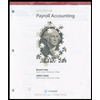Part 1 is complete. I have copied it below before Part 2. This should help to complete Part 2 since there is no missing information. Newspaper ad $120 per month Social media manager $100 per month; $1 per job scheduled Payment collection $0.75 per job Gas $4.00 per job Considering his analysis of similar services and to keep things simple, W.T. plans to price all jobs the same and charge $15 per job. Because of this flat rate, he anticipates he’ll likely need to create different types of “jobs”. For example, purchasing a list of items at the grocery store would be one job, while a bundle of 2-3 small errands such as picking up dry cleaning and prescriptions, might be considered one job. We’ll deal with those details later. For now, assume that all jobs are priced at $15 each and all have the associated variable expenses listed above. Because this will be a new business, W.T. knows business will likely be slow at the beginning. Complete the following table assuming W.T. completes 10 jobs in a single month. Item Per Job Total (10 jobs) Computations Sales $15.00 $150.00 (15x10) Less: Variable Cost $5.75 $57.50 (5.75x10) Contribution Margin $9.25 $92.50 (9.25x10) Less: Fixed Cost $22.00 $220.00 Gross Margin $(12.75) $127.50 (92.50-220) Part 2 Yikes! He’ll clearly have to complete more than 10 jobs. W.T. needs to be able to at least cover his costs. Still using the preliminary estimates provided, how many jobs would W.T. have to complete to break even? What would that be in dollars? (1) Contribution margin: Sales price per job $ Less: Variable costs per job $ =Contribution margin per job $ (2) Break-even point in units: Fixed costs = $ = jobs Contribution margin per job $ Note: W.T. won’t be paid if he only completes part of a job. (3) Break-even point in sales: Break-even point in jobs x Sales price per job = Break-even point in dollars x $ = $ Check your work: Total sales $ Less: Total variable costs $ = Total contribution margin $ Less: Total fixed costs $ = Total profit $ Question: Why is breakeven profit not exactly $0?
Part 1 is complete. I have copied it below before Part 2. This should help to complete Part 2 since there is no missing information.
|
Newspaper ad |
$120 per month |
|
Social media manager |
$100 per month; $1 per job scheduled |
|
Payment collection |
$0.75 per job |
|
Gas |
$4.00 per job |
Considering his analysis of similar services and to keep things simple, W.T. plans to price all jobs the same and charge $15 per job. Because of this flat rate, he anticipates he’ll likely need to create different types of “jobs”. For example, purchasing a list of items at the grocery store would be one job, while a bundle of 2-3 small errands such as picking up dry cleaning and prescriptions, might be considered one job. We’ll deal with those details later. For now, assume that all jobs are priced at $15 each and all have the associated variable expenses listed above.
Because this will be a new business, W.T. knows business will likely be slow at the beginning. Complete the following table assuming W.T. completes 10 jobs in a single month.
|
Item |
Per Job |
Total (10 jobs) |
Computations |
|
Sales |
$15.00 |
$150.00 |
(15x10) |
|
Less: Variable Cost |
$5.75 |
$57.50 |
(5.75x10) |
|
Contribution Margin |
$9.25 |
$92.50 |
(9.25x10) |
|
Less: Fixed Cost |
$22.00 |
$220.00 |
|
|
Gross Margin |
$(12.75) |
$127.50 |
(92.50-220) |
Part 2
Yikes! He’ll clearly have to complete more than 10 jobs. W.T. needs to be able to at least cover his costs. Still using the preliminary estimates provided, how many jobs would W.T. have to complete to break even? What would that be in dollars?
(1) Contribution margin:
|
Sales price per job |
$ |
|
Less: Variable costs per job |
$ |
|
=Contribution margin per job |
$ |
(2) Break-even point in units:
|
Fixed costs |
= |
$ |
= |
jobs |
|
Contribution margin per job |
$ |
Note: W.T. won’t be paid if he only completes part of a job.
(3) Break-even point in sales:
|
Break-even point in jobs |
x |
Sales price per job |
= |
Break-even point in dollars |
|
|
x |
$ |
= |
$ |
Check your work:
|
Total sales |
$ |
|
Less: Total variable costs |
$ |
|
= Total contribution margin |
$ |
|
Less: Total fixed costs |
$ |
|
= Total profit |
$ |
Question: Why is breakeven profit not exactly $0?
Trending now
This is a popular solution!
Step by step
Solved in 2 steps








